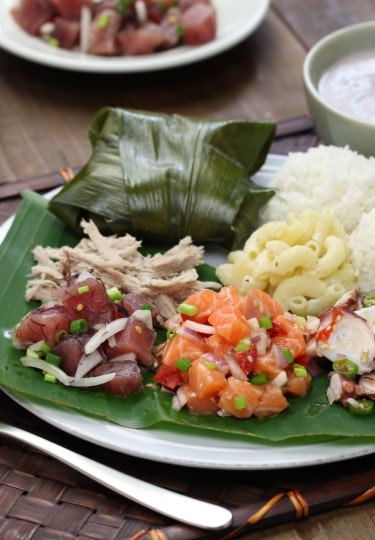Hawaiian food is a delicious representation of the complex history and cultural diversity of the archipelago. These islands have been inhabited by humans since ocean voyagers from the Marquesas Islands settled here some 1,600 years ago. For generations, Native Hawaiians built their cuisine around the abundant tropical fruits and the freshest of seafood.
Over the last few centuries, food in Hawaii has been shaped by waves of immigration. Everyone from Portuguese, Japanese, and Chinese communities left their mark on the gastronomic landscape. Today, the cuisine here features everything from Indigenous specialties to Japanese-influenced dishes.
Here are just a few of the specialties to try on your next trip to Hawaii.
Poke
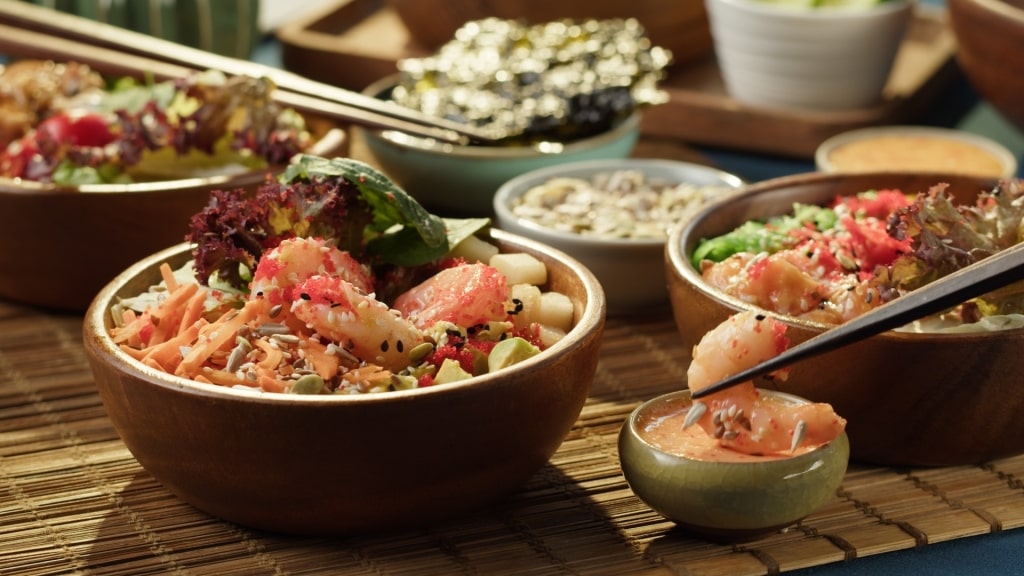
Poke
Many first-time visitors to Hawaii will say they’ve had poke before. It’s true that over the last decade, the Hawaiian staple has proliferated all over fast-casual chain restaurants. Yet the many mass-produced, mainstream iterations fail to do justice to the real deal. The true origins of poke are ancient and closely entwined with the history and evolution of the archipelago.
Long before European colonists set foot here, Hawaiians dressed their freshly caught, raw reef fish with paʻakai, or sea salt, and various forms of seaweed for umami.
Crushed roasted kukui nuts were often added for crunch. While 18th-century European voyagers were initially put off by the concept of eating raw seafood, they soon realized how delicious it could be.
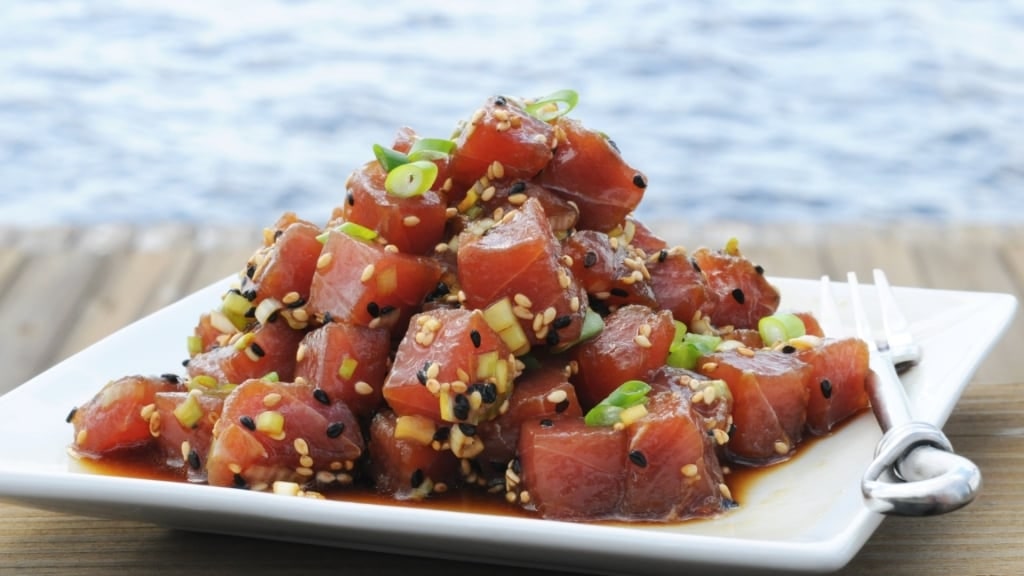
Tuna poke
In the 19th century, Japanese laborers immigrated to Hawaii, bringing with them their own palates and culinary traditions. Before long, deep-water fish like mahi-mahi and tuna became popular choices.
The seasonings gradually shifted to include more soy sauce and acidity. Rice became the standard base, creating what we would later think of as poke bowls. “Poke,” incidentally, is the word for cutting something into pieces crosswise.
Poke as we know it today shot to international fame during the 1970s and ‘80s. Although Hawaiians had been surfing for centuries, the rest of the world suddenly became fascinated by the sport and eyes were turned to Hawaii. Local champion surfers like Duke Paoa Kahinu Mokoe Hulikohola Kahanamoku became celebrities. Around the same time, the Japanese diaspora within Hawaii was growing. Toppings such as toasted nori and crushed wasabi peas grew more popular.
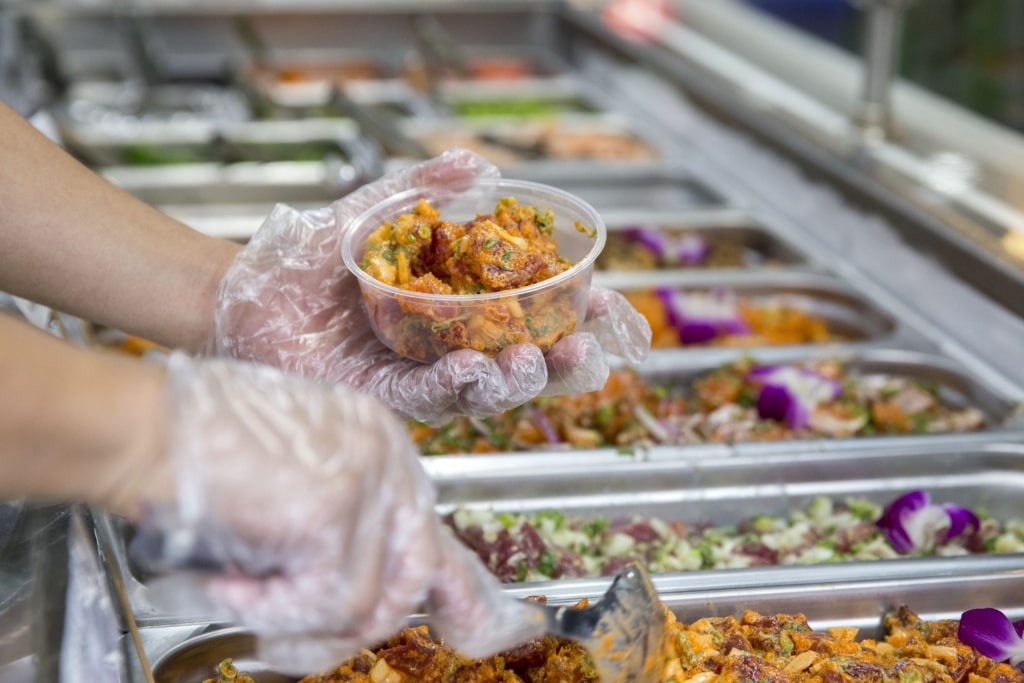
Restaurant in Hawaii
Today, poke is still one of the most delicious ways to enjoy Hawaii’s wealth of fresh seafood. Each restaurant has its own special formulation.
No matter where you go, the quality in Hawaii itself tends to far exceed anything on the mainland. Part of this has to do with the quality of the ingredients, as well as the way chefs here tend to salt and marinate their fish briefly before serving.
Read: Best Beaches in Honolulu
Lau Lau
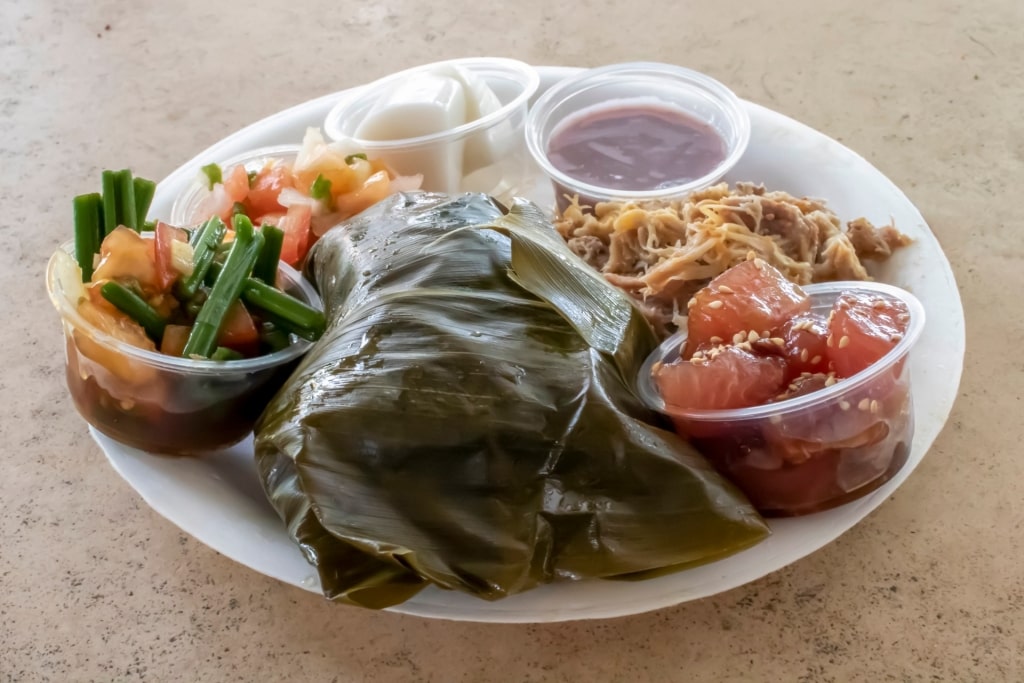
Lau lau
A common component of many celebratory Hawaiian feast spreads, lau lau consists of a bundle of taro leaves wrapped around pork and butterfish, then steamed until tender. The pork is typically a fatty cut, which helps flavor the delicate, flaky fish and keep it moist.
In the olden days, these savory parcels were placed in a pit on banana leaves and steamed underground. Modern cooks often speed up the process with a pressure cooker. Even still, lau lau is quite time-consuming to make, which is why it’s usually reserved for special occasions. It’s the perfect accompaniment to kālua pork.
Kālua Pig
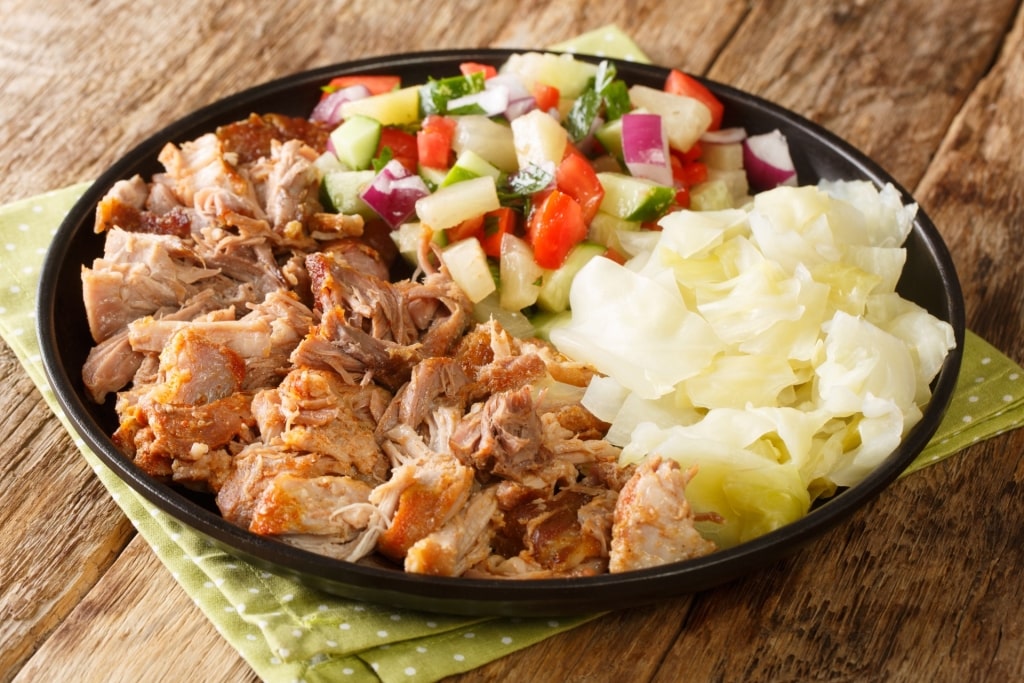
Kālua pig
If you go to a traditional Hawaiian lūʻau, or feast, you’re all but guaranteed to find kālua pig. As with whole pig roasts in just about any culture, these are typically reserved for special occasions.
The word “kālua” refers to the cooking method of slow-roasting the pig in an underground oven. It’s a technique familiar to pitmasters around the world that produces especially succulent results.
Preparing the imu in which to cook the pig is a serious labor of love. The pit must first be lined with either banana leaves or wet burlap to absorb and disperse heat. The cook also adds heated stones to the interior cavity of the pig so that the meat all cooks at the same rate. The results are impossibly tender, with crackling-crisp skin.
Lomi-Lomi Salmon
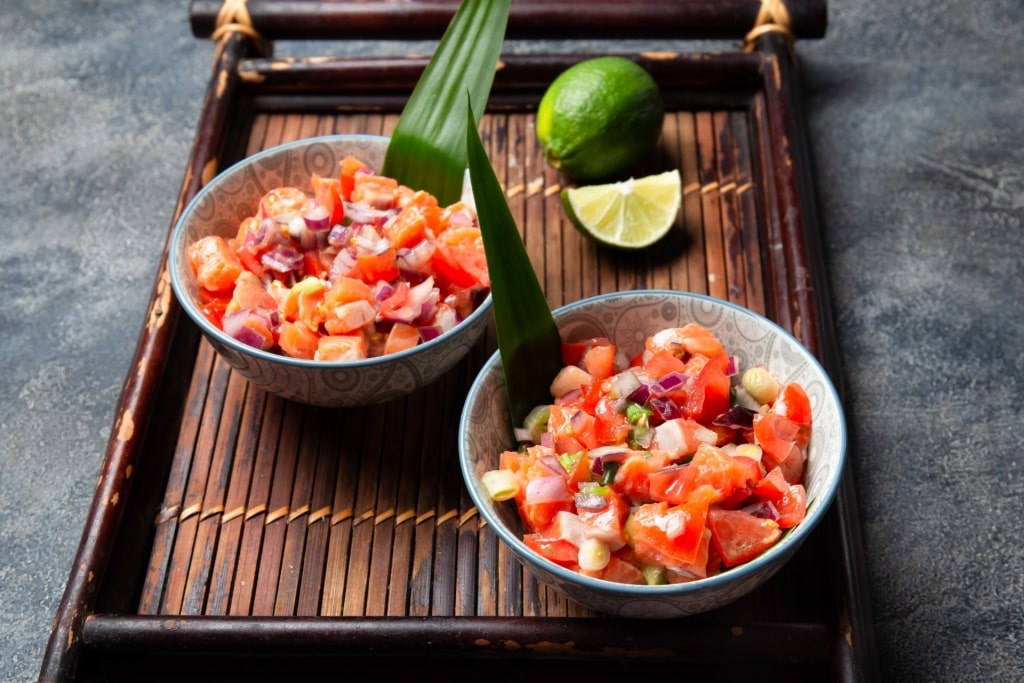
Lomi-lomi salmon
Much like poke, the term lomi-lomi refers to the technique with which fish is prepared. There’s a reason you may also have heard of a lomi-lomi massage—it’s the same concept. Only in this case, it’s cubes of salmon being “massaged” with salt and seasonings. Historically, adding salt was partially to help preserve the fish, although nowadays it’s strictly for flavor enhancement.
Also like poke, the roots of lomi-lomi go back long before the arrival of colonists, but the dish has evolved considerably over the years. Lomi-lomi salmon typically includes finely diced tomatoes and onions. Some cooks also sprinkle in minced scallions, chiles, or other seasonings.
Loco Moco
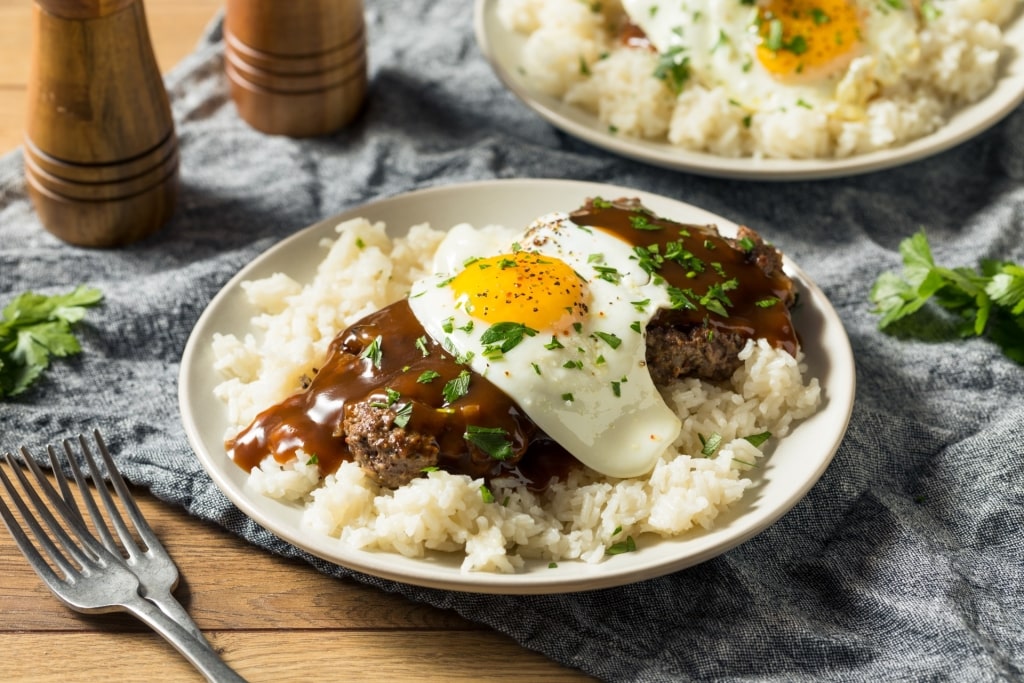
Loco moco
Loco moco may be the ultimate comfort dish of Hawaiian food. Supposedly, the dish was born in 1949 at the Lincoln Grill in Hilo to feed a group of ravenous teens. In its most elemental form, loco moco consists of white rice topped with a ground beef patty, gravy, and a fried egg. From that jumping-off point, some cooks put their own spins on the formula.
It’s important to note though that if someone swaps the hamburger patty for, say, spam or chicken, the name of the dish changes. So it’s possible to order a ham loco or mahi-mahi loco, depending on the other ingredients.
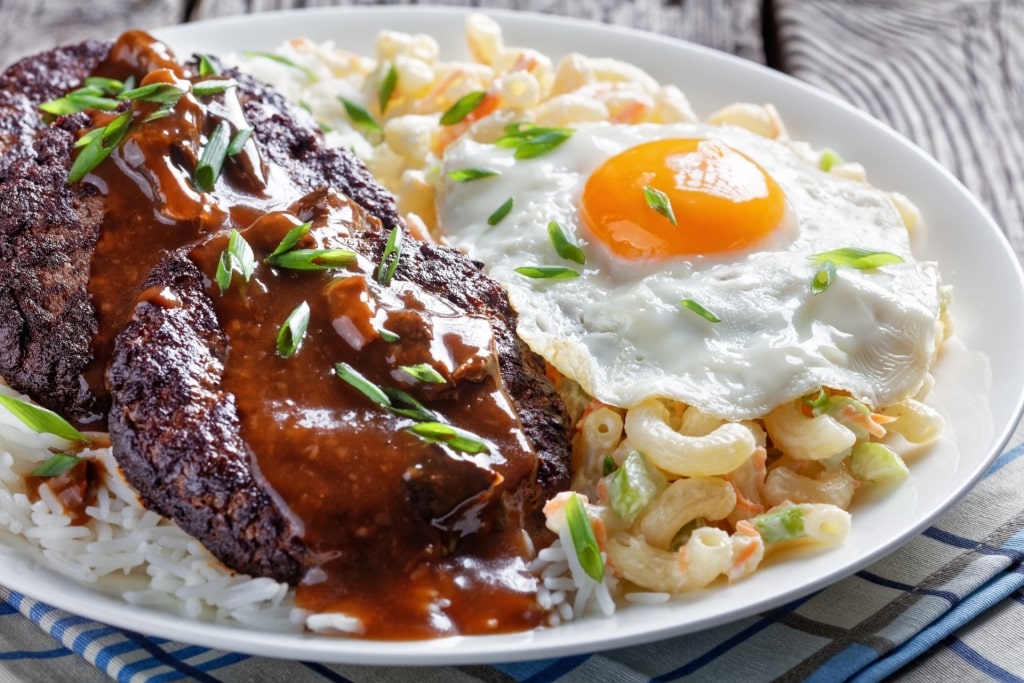
Hawaiian plate lunch
Oftentimes, loco moco is a part of what’s known as a Hawaiian plate lunch. Much like a “meat and three” in the American South, a Hawaiian plate lunch is all about pairing the protein with sides. The tradition most likely started as an affordable workers’ lunch in the late 19th century. As part of a plate lunch, loco moco might be paired with anything from macaroni salad to yakisoba.
That’s because much like Hawaii itself, the Hawaiian lunch plate is something of a melting pot. As the demographics and tastes of the local population shift, so do the mains and sides. Traditional Hawaiian foods like kālua pork or lomi-lomi salmon are popular additions. However, you’re equally likely to find teriyaki chicken or pork katsu.
Haupia
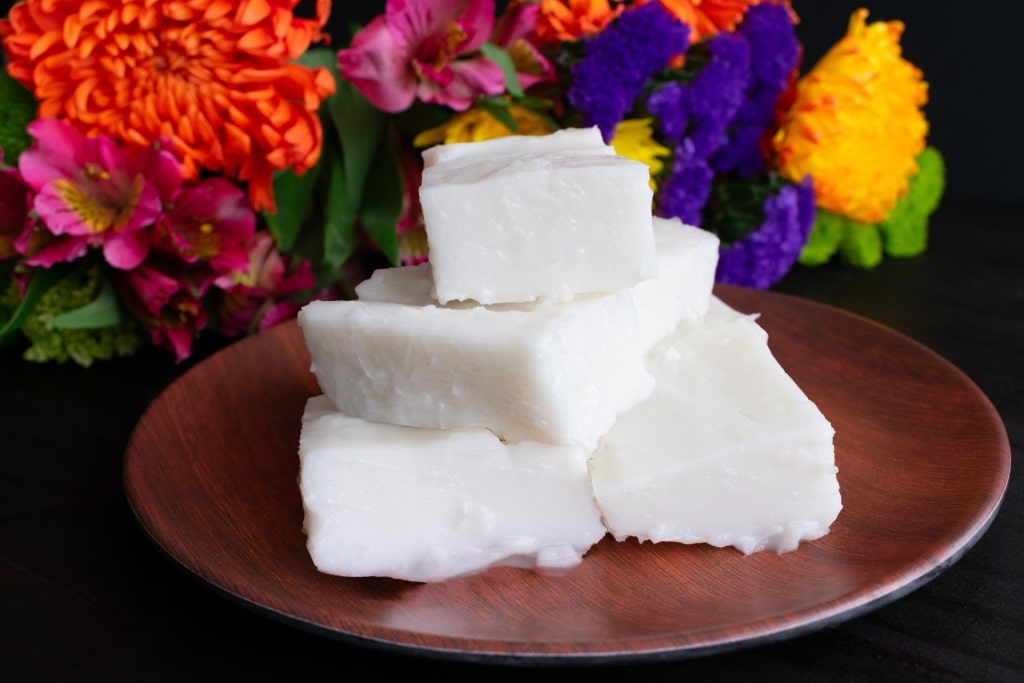
Haupia
Hawaii’s fragrant dessert is a classic example of a dish that is greater than the sum of its parts. This pudding consists of only four ingredients: coconut milk, water, cornstarch, and sugar. Cook them all together and you get a firm, luscious pudding that slices easily into squares.
While haupia is certainly sweet, it only loosely conforms to the idea of a dessert. In Hawaii, it’s often served alongside the main savory dishes as part of a larger spread. In that case, it serves as a kind of palate cleanser, sometimes dipped in sea salt for a sweet-savory vibe.
Malasadas
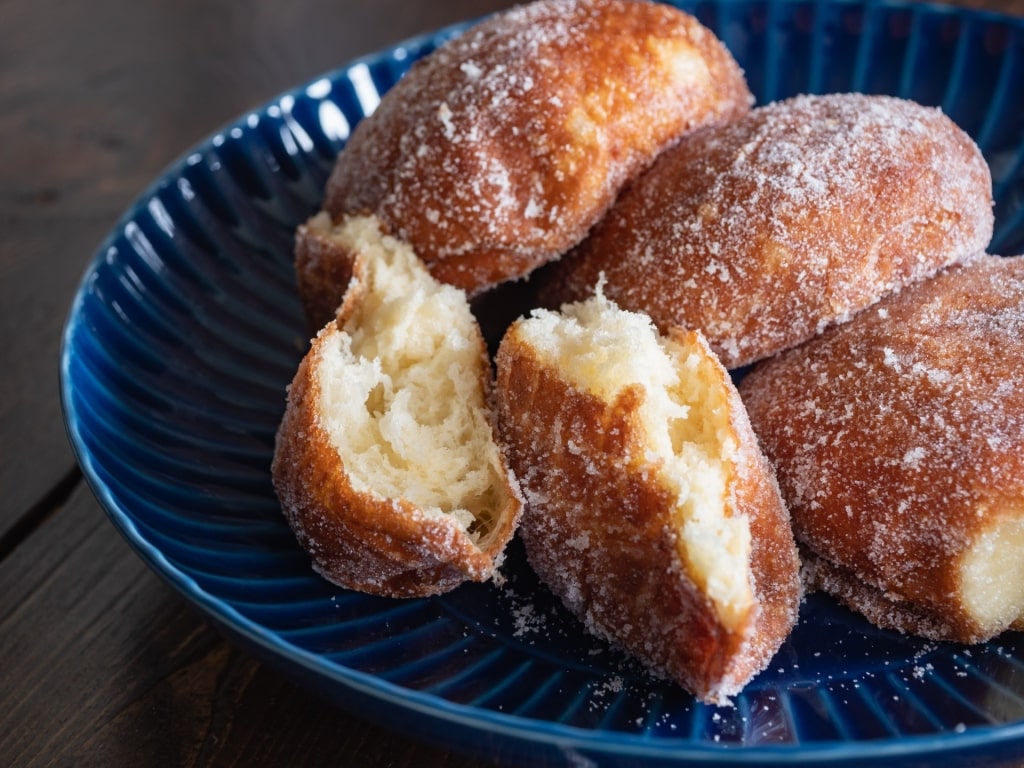
Malasadas
These pillows of fried dough are malasadas, a Portuguese import with roots stretching back to São Miguel, one of the islands in the Azores. Back in Portugal, these treats were often served around Fat Tuesday, before Roman Catholics entered their Lenten fast.
Like their Portuguese ancestors, Hawaiian malasadas are flattened, round fritters made with a yeast-leavened dough. There are a few key differences, however. The main one is that the number of eggs and yolks in Hawaiian malasadas are particularly high, resulting in a particularly rich dough.
Hawaiians also tend to use evaporated milk in the dough, a hallmark from when fresh dairy products were relatively hard to come by on the islands.
Shave Ice
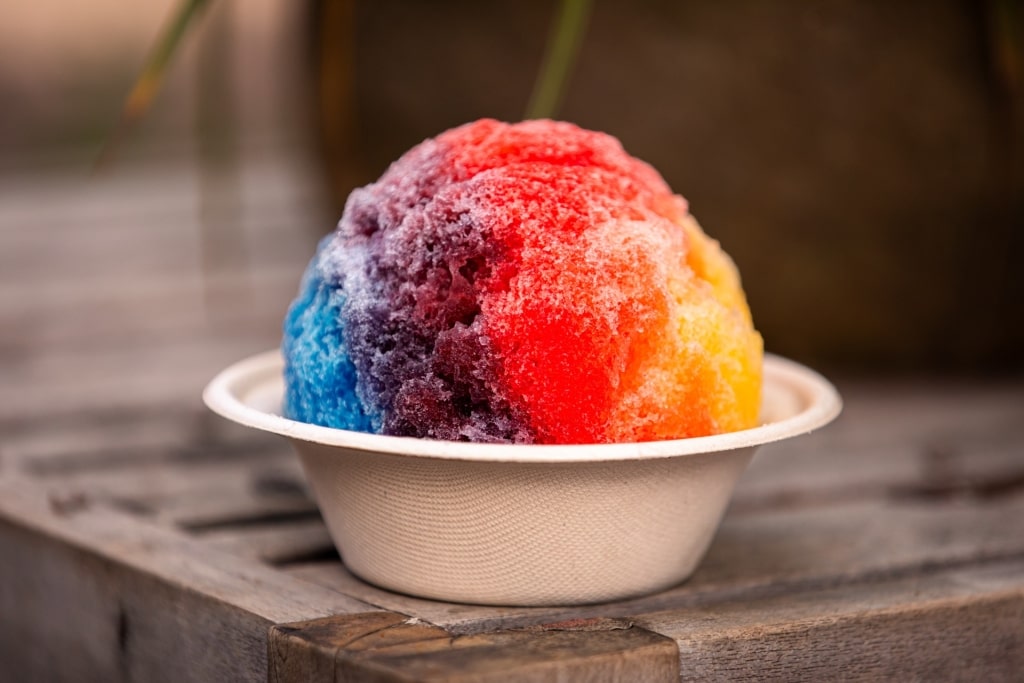
Shave ice
If you’re looking to beat the heat on a Hawaiian afternoon, there’s no better way to do it than with Hawaiian shaved ice, which is often historically referred to as “shave ice” here. Like many Hawaiian dishes, the ancestral roots of this sweet treat are Japanese. Kakigori is a traditional dessert in which a blizzard of freshly shaved ice is doused in various syrups or sweetened, condensed milk.
Many of the most iconic shave ice shops in Hawaii have been around since the mid-20th century. Matsumoto’s Shave Ice, on the northern side of Oahu, has been family-owned and operated since 1951. As with some traditional institutions, it still uses an old-school machine to turn out delicate ice flakes.
Toppings for this refreshing dessert vary enormously. Think of the shave ice as a blank canvas for any number of syrups, fruits, and other saccharine add-ons. Decidedly Japanese-inflected toppings like sweet red Azuki beans or matcha syrups are also popular these days.
Huli-Huli Chicken
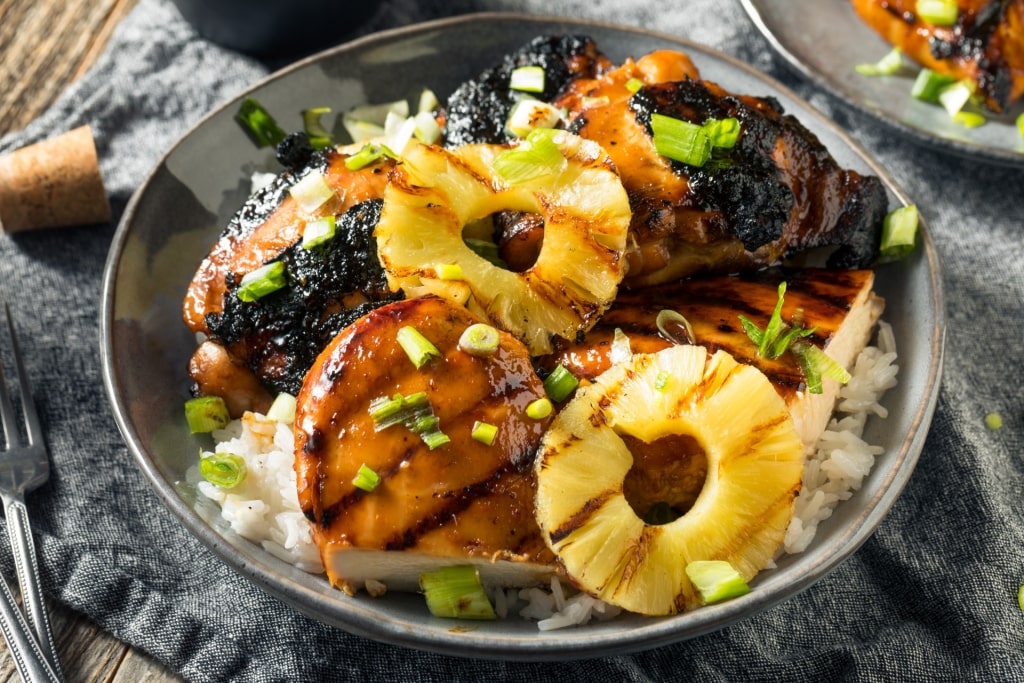
Huli-huli chicken
Head to just about any Hawaiian barbecue and you’ll find platters of this sticky-sweet chicken. Huli-huli came about in 1955, when a businessman in Honolulu by the name of Ernesto Morgado served up chicken marinated in teriyaki sauce.
The immediate reaction of the diners was so positive that he decided to cash in on the idea. He dubbed his creation “huli-huli” after the Hawaiian word for “turn,” in reference to flipping the birds on a grill.
Recipes for huli-huli chicken vary quite a bit from cook to cook. The key here is a sweet, tangy soy-based sauce that morphs into a shiny glaze with the heat of a live fire. Pineapple juice, brown sugar, rice vinegar, or sometimes ketchup are often included. Bone-in, skin-on chicken parts tend to be preferred for the juiciest grilled meat.
Spam Musubi
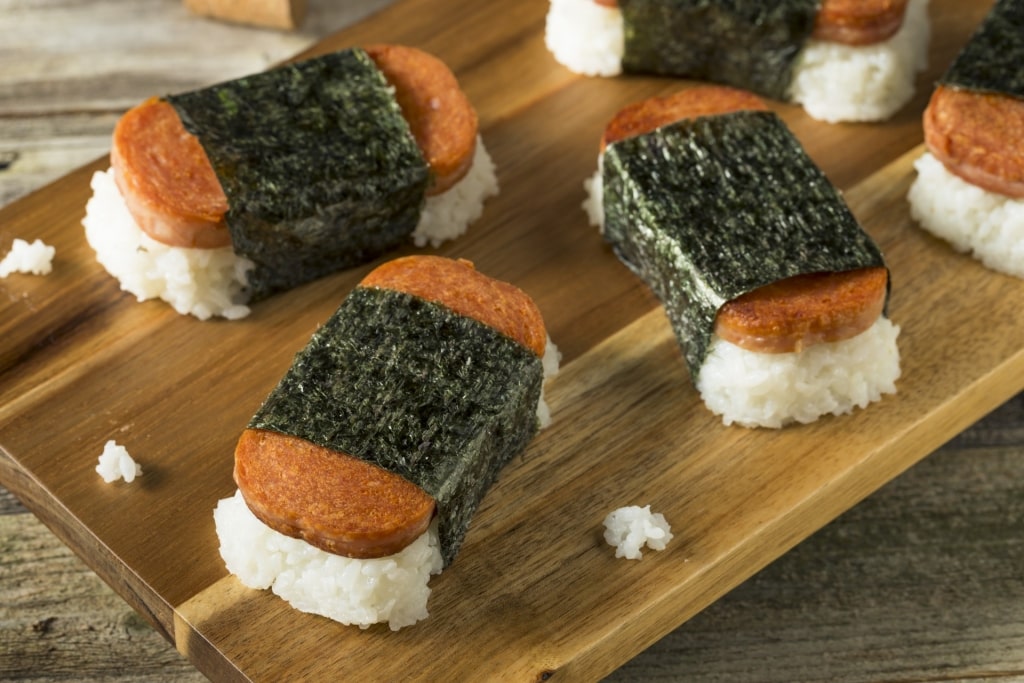
Spam musubi
Spam was invented in 1937 by Hormel Foods Corporation, but it didn’t fully take off until the U.S. military latched onto it. During World War II, the U.S. government purchased 150 million pounds of the canned “spiced ham” to keep their troops fed overseas. In the post-war era, the continued U.S. military presence throughout the Pacific had an unintended consequence: the rise of Spam.
Although the product may have been mostly developed for convenience and shelf-life, it quickly became a beloved staple in the Philippines, Okinawa, Guam, and Hawaii. To this day, Spam with eggs and rice is a standard menu item at McDonald’s in Hawaii.
Today, Spam musubi is both a popular Hawaiian snack and a perfect example of both the American and the Japanese influence on the local cuisine. The dish consists of a fat slice of marinated Spam pan-fried until caramelized on both sides. The meat is then placed atop a pat of sushi rice seasoned with vinegar and sugar, then wrapped together with nori.
Poi
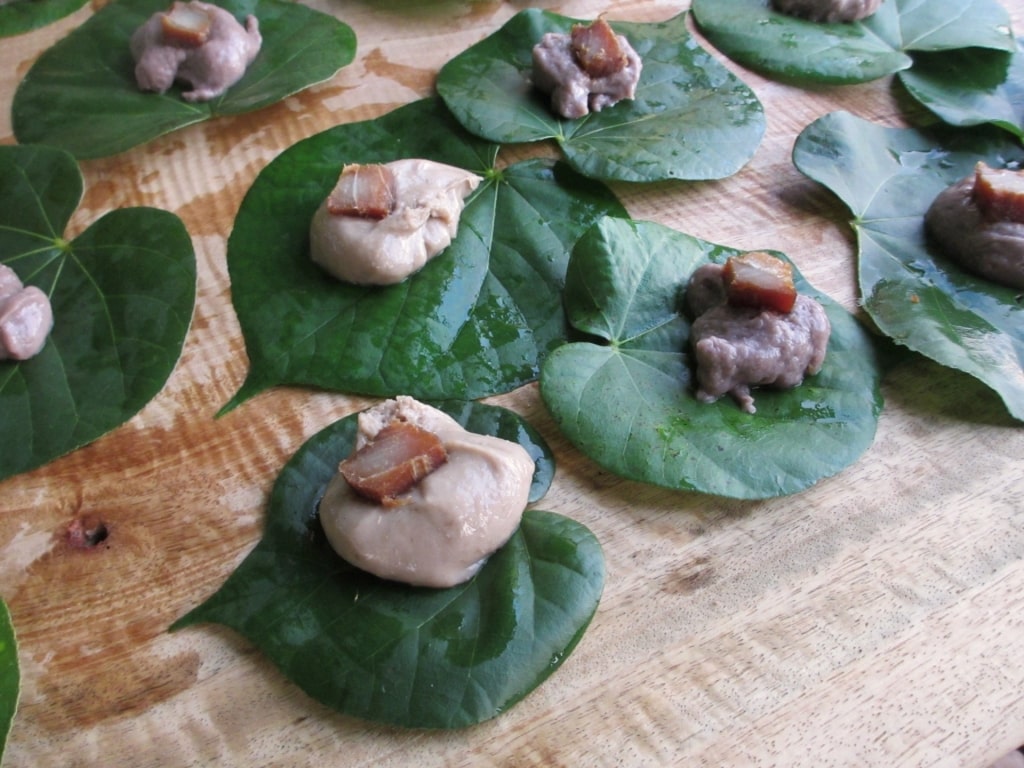
Poi
This creamy, starchy paste made from mashed taro has been fundamental to Hawaiian society for centuries. Different variations of this dish exist throughout much of Polynesia, sometimes made with breadfruit or other techniques.
Making poi the traditional way is incredibly labor-intensive. Historically, the taro corms were pounded by hand in a basalt vessel. The resulting violet-hued paste has a subtle, delicate flavor. If allowed to ferment for a day or more with Lactobacillus, it becomes tart and complex, almost like yogurt.
Although poi is no longer as ubiquitous on these islands as it once was, it’s still central to any traditional Hawaiian feast. Its slightly sweet, mostly neutral flavor makes for a perfect foil for savory roasted meats or salted fish. It can also be an ingredient in baked goods and sweets.
Hawaiian Sweet Bread
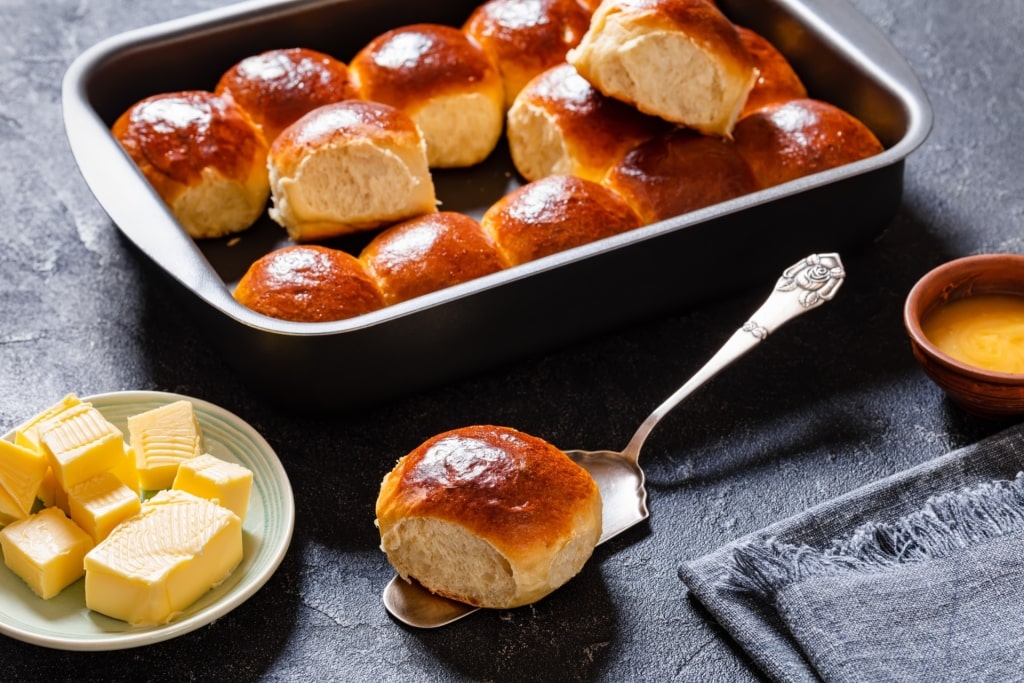
Hawaiian sweet bread
Like many of present-day Hawaii’s most famous foods, this fluffy bread owes its origins to the archipelago’s immigrant communities. During the 1800s, Portuguese laborers settled on the Big Island to work in the sugar industry. This sweet bread was among the most beloved of the many foods they brought with them from their homeland.
Traditionally, Portuguese sweet bread is most often found around Easter or Christmas. The Hawaiian iteration is very much a year-round specialty. King’s Hawaiian, the most popular mass-produced version, can be found in just about every major grocery store.
While there’s certainly nothing wrong with it, it’s also worth seeking out versions by local bakeries. The best loaves are baked in a stone oven and have a texture akin to a light challah. Butter, honey, plenty of eggs, sugar, and milk make for a rich dough, while a hint of lemon zest adds fragrance.
Read: Best Time to Cruise to Hawaii
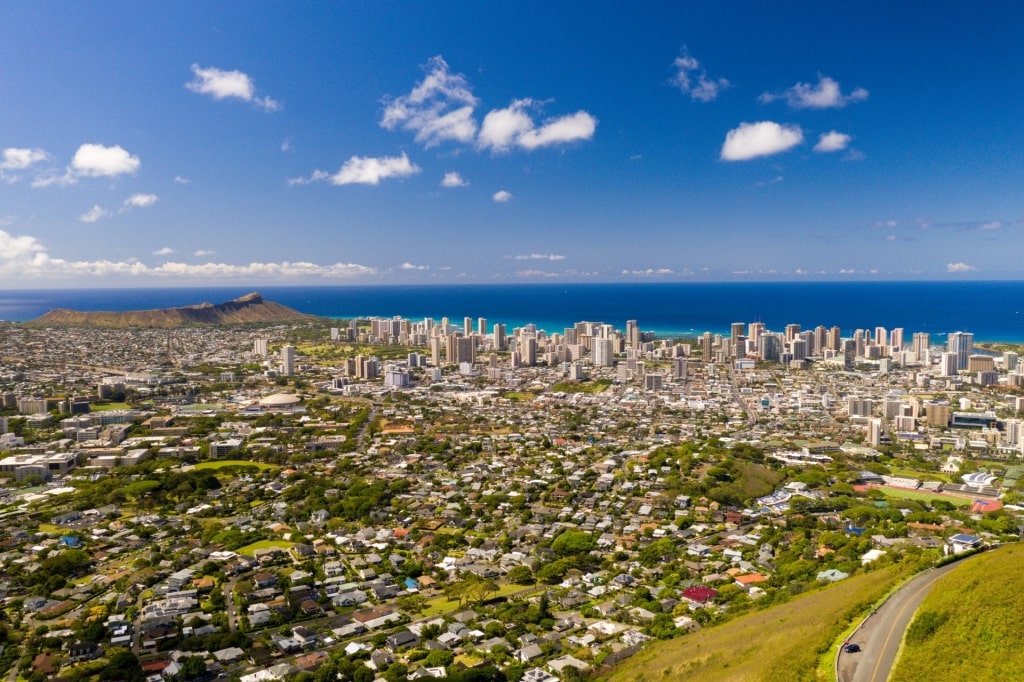
Honolulu
The Hawaiian islands are full of all sorts of phenomenal food waiting to be explored. Browse our Hawaiian cruises and plan your own culinary adventure.
